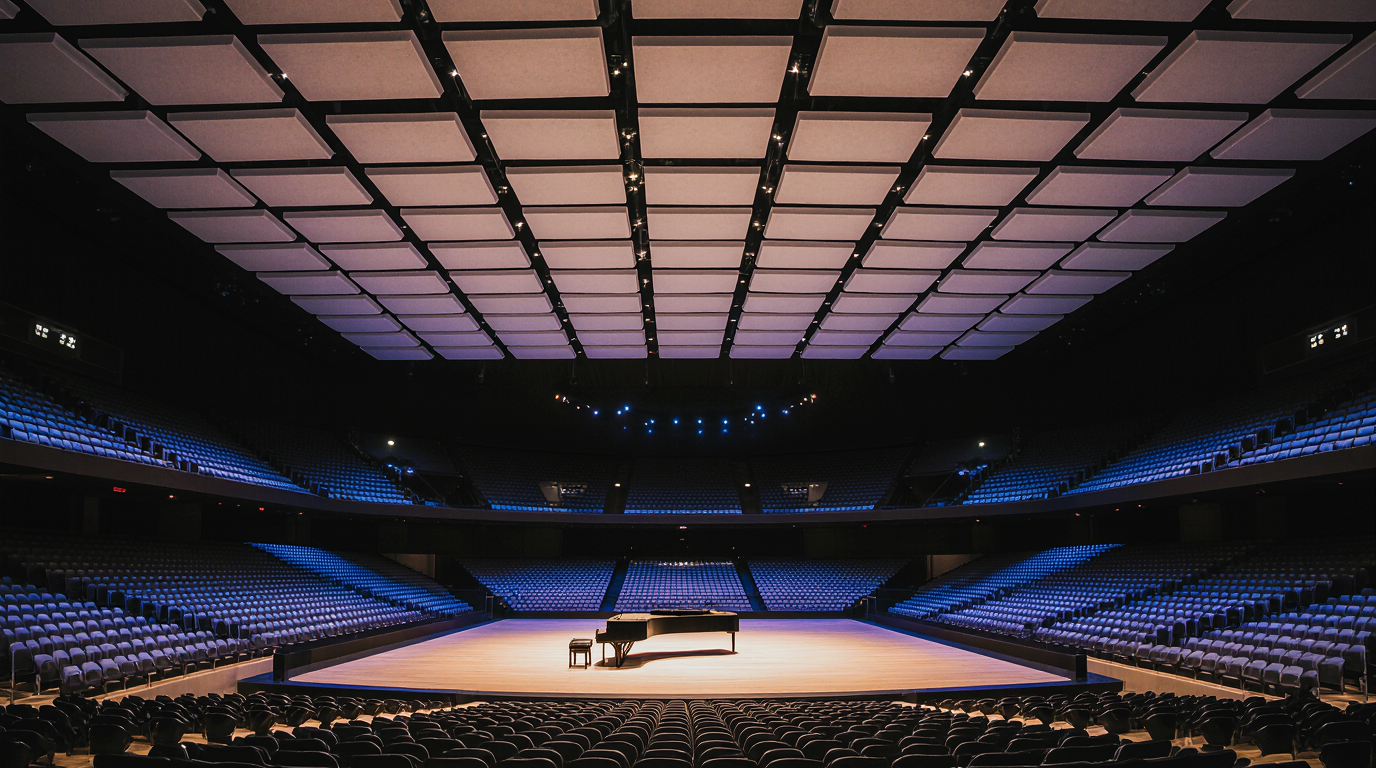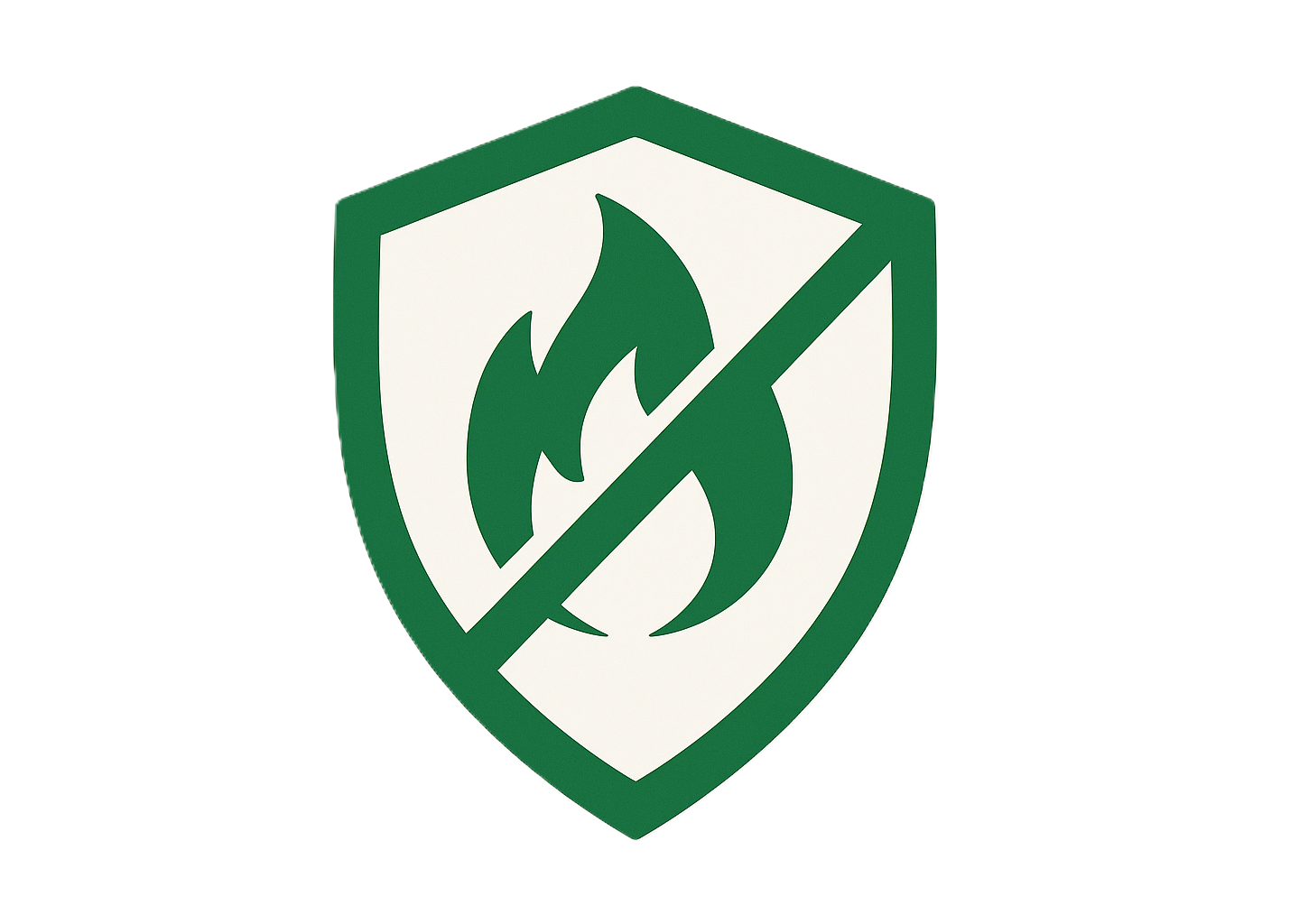
Acoustic foam is one of the most recognizable tools for managing sound inside a room. Those familiar pyramid or wedge-shaped panels are lightweight, easy to install, and effective at reducing echoes and controlling reflections. They work by absorbing sound energy, especially in the mid to high frequency range. That’s why you’ll often see them in recording studios, offices, podcast spaces, or even home theaters.
But the big question many people ask is simple: is acoustic foam flammable? The straightforward answer is yes, most basic foams can burn because they are made from polyurethane or melamine-based materials. However, not every foam behaves the same. Some types are treated with fire-retardant chemicals to slow ignition, while others meet strict fire safety codes. The difference between untreated foam and certified fire-resistant products can mean the difference between a safe room and a serious hazard.
For anyone planning to use foam in a home or workplace, it’s important to know what kind you’re buying. Standard foam absorbs sound well, but without proper fire treatment, it may catch fire quickly and release toxic smoke. That is why safety testing, certification, and choosing the right supplier matter as much as the acoustic performance itself.
Fire Ratings and Classifications
When discussing foam safety, fire ratings are the key. These ratings are a universal way to tell how well a material resists fire and how much it contributes to flame spread. Manufacturers must follow standards set by testing bodies to prove their products are safe.
Before going deeper, it’s useful to understand what fire ratings actually mean.
What fire ratings mean
Fire ratings are a universal way to measure how a material behaves in a fire. They indicate how fast flames spread and how much smoke is generated. This helps builders, designers, and property owners choose products that not only improve acoustics but also protect safety.
|
Fire Rating |
Description |
Recommended Use |
|
Class A |
Lowest flame spread and smoke development. Highest level of fire resistance. |
Safest choice for walls, ceilings, and areas requiring strict fire codes. |
|
Class B |
Moderate flame spread and smoke production. Less resistant than Class A. |
May be acceptable in some residential spaces but not ideal for commercial use. |
|
Class C |
Higher flame spread and smoke levels. Provides the least resistance. |
Generally not recommended where safety or codes are a priority. |
|
No Rating |
Untested or uncertified material. Behavior in fire is unknown. |
Should be treated as a fire hazard. Not suitable for responsible building projects. |
When someone asks if a product is safe, the answer lies in this classification. Fire retardant acoustic foam with a Class A rating provides peace of mind and helps meet building code requirements, while unclassified foam should be avoided.
How acoustic foam is tested for fire resistance
Testing isn’t just a marketing phrase. Accredited labs perform controlled burns in tunnel chambers to measure how flames move across the surface. They also record how much smoke the foam produces. These results determine the official classification.
Another standard often used is UL 94, which measures the flammability of plastic materials. A foam that passes a high-level UL 94 test resists ignition longer and self-extinguishes faster. Together, these standards ensure buyers know whether the foam is only decorative or actually safe for serious installations.
For architects, designers, and property owners, these tests provide a clear signal. If you want fire-resistant soundproofing, you need to see proper certification. Without it, you’re relying on luck. With it, you know your material has been pushed to its limits and proven safe.
Choosing the Fire Retardant Acoustic Foam

Thankfully, the market today offers more than one choice. Standard foam is still available, but fire-retardant options are designed to give both performance and peace of mind.
Difference between standard and fire-retardant foam
At first glance, both types look the same. They may share the same shape, color, and texture. But the difference is inside. Standard acoustic foam uses untreated polyurethane, which is lightweight but burns easily. Fire retardant acoustic foam, by contrast, is either made with special chemical additives or produced from inherently safer materials such as melamine.
This doesn’t make the foam completely fireproof. Even treated foam can eventually burn under intense heat. But it will resist ignition much longer and won’t allow flames to spread as quickly. That extra time can be critical in real emergencies.
For people asking whether fire-retardant acoustic foam is worth the investment, the answer is yes. It not only reduces risk but also ensures compliance with codes in many commercial spaces.
Benefits of choosing fire-retardant acoustic foam
The advantages go beyond just slowing fire. Certified products typically come with lab reports and rating labels. This documentation helps contractors, architects, and inspectors verify compliance during construction projects. It also protects property owners from liability in case of an accident.
On a practical level, fire-rated foam performs just as well acoustically as untreated foam. It reduces echoes, manages reflections, and enhances sound quality in the same way. The difference is that it does so safely.
When combined with other safety measures, choosing the right foam can transform a room into a professional-grade space that’s both functional and secure. For schools, offices, studios, and theaters, that combination is non-negotiable.
Fire-Resistant Soundproofing Alternatives
Foam is not the only option for controlling sound. In fact, when fire safety is a priority, other materials often outperform foam. These alternatives offer both acoustic performance and peace of mind, which is why professionals turn to them for serious projects.
Mineral wool and fiberglass panels
Mineral wool and fiberglass are two of the most widely used materials in acoustic and thermal insulation. They are naturally non-combustible, which makes them far safer than untreated foams. Mineral wool, in particular, can withstand extremely high temperatures without melting or releasing toxic smoke.
From an acoustic standpoint, both materials absorb a broad range of frequencies. That makes them effective for controlling echoes and reducing overall noise levels. Panels made from these fibers are common in theaters, offices, and apartment complexes where both sound and fire codes matter.
Fabric-wrapped acoustic panels
Another strong alternative is fabric-wrapped panels. These products are essentially dense acoustic cores covered in decorative fabric. When produced with fire-rated materials, they pass Class A standards and meet the strictest building codes.
Fabric-wrapped panels offer design flexibility, too. They can be customized in different colors, shapes, and textures, blending into offices or studios while delivering reliable fireproof sound insulation. This balance of safety and aesthetics makes them popular in commercial spaces where appearance is just as important as performance.
Fireproof sound insulation boards
For heavy-duty applications, rigid insulation boards provide excellent fire resistance. Made from gypsum, cement-based compounds, or other dense materials, these boards not only block sound but also add significant mass to walls and ceilings.
Adding boards like these is one of the most effective ways to achieve fire-resistant soundproofing. They create a barrier that bass, mid, and high-frequency sounds struggle to penetrate, all while meeting fire safety requirements.
Building Codes and Compliance Requirements
Fire safety is not just about personal choice. In many cases, it is the law. Building codes set minimum requirements to protect lives and property, and ignoring them can lead to fines, failed inspections, or worse, unsafe conditions.
Residential and commercial requirements
In residential buildings, requirements are generally less strict, but safety still matters. Many homeowners choose certified products for peace of mind, especially in basements, garages, or home theaters where foam may be installed in larger quantities.
Commercial spaces face tougher rules. Offices, schools, theaters, and healthcare facilities must use materials that meet Class A ratings for wall and ceiling treatments. Inspectors look for compliance, and failure to provide documentation can halt a project. Choosing fire-retardant acoustic foam or certified alternatives is often the only way forward.
Why compliance protects property and lives
Beyond legal issues, compliance is about protecting people. Materials that resist ignition slow down fire spread, giving occupants more time to evacuate. They also reduce the production of toxic smoke, which is often the deadliest part of a fire.
For business owners, using compliant products reduces liability. In case of an incident, showing that all acoustic materials met the required fire ratings proves due diligence. This protects both the people inside the building and the reputation of the company responsible.
Soundproofing Products with Fire Safety from Sound Pro Solutions
Sound Pro Solutions understands the importance of balancing acoustics with safety. The company offers a wide range of materials that not only control noise but also meet fire performance standards.
Acoustic panels available from Sound Pro Solutions are tested for fire safety and provide excellent absorption for mid and high frequencies. For customers seeking structural solutions, options such as mineral wool insulation and fire-rated boards are available.
For vibration control, Green Glue remains a top choice. While not a visible layer, it is a critical component for damping sound transmission between walls or ceilings. Combined with fireproof sound insulation boards, it creates assemblies that are both quiet and safe.
Other products, like door seals and isolation clips, play supporting roles. They prevent sound from leaking through gaps and decouple structures to stop vibrations from transferring. Used together, these solutions create a complete system that improves comfort while keeping fire safety at the forefront.
By providing certified products, Sound Pro Solutions gives homeowners, contractors, and architects confidence. They know they can design spaces that sound great without compromising on safety.
Simple Steps for Fire-Safe Acoustic Design
Choosing the right products is only half the job. Applying them correctly and making informed decisions ensures long-term results. Here are some practical tips to keep in mind:
- Always check certifications. Don’t rely on labels alone. Ask for test reports or rating documentation.
- Think about placement. Avoid placing acoustic foam near heat sources like lamps, heaters, or electronics.
- Mix materials for balance. Use a combination of fire-rated foam, mineral wool, and panels to get both safety and performance.
- Seal edges carefully. Even the best products lose effectiveness if gaps remain. Acoustic caulk and proper installation make a big difference.
- Plan for code compliance early. If you’re working on a commercial project, involve inspectors and code officials from the start. This prevents expensive rework later.
- Work with trusted suppliers. Companies like Sound Pro Solutions provide guidance along with products, helping you make safe and effective choices.
Safe acoustic design is about more than sound. It is about creating spaces where people can live, work, and perform with confidence, knowing the materials around them will not put them at risk.
Recent posts




